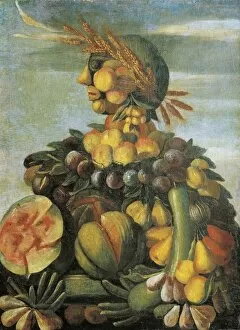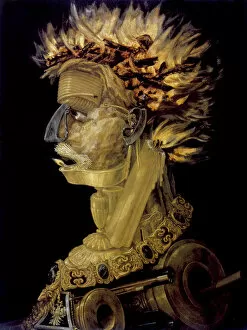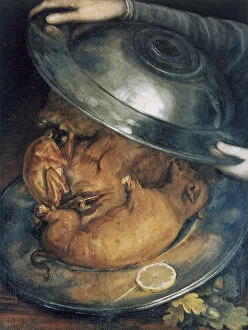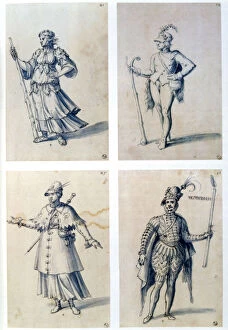Arcimboldi Collection
Giuseppe Arcimboldi, an Italian artist from Florence, was a master of creating unique and imaginative artworks
For sale as Licensed Images
Choose your image, Select your licence and Download the media
Giuseppe Arcimboldi, an Italian artist from Florence, was a master of creating unique and imaginative artworks. One of his most famous pieces is "The Cook, " painted around 1570. In this painting, Arcimboldi skillfully arranged various vegetables and fruits to form the face of a cook, and is a testament to his creativity and ability to transform ordinary objects into extraordinary art. Another notable work by Arcimboldi is "The Spring, " which features a basket of cherries adorned with beautiful flowers. This piece showcases his attention to detail and vibrant use of colors, capturing the essence of the season. Arcimboldi's talent extended beyond still life paintings; he also created portraits such as "Vertumnus - Rudolf II" in 1590. This portrait depicts Emperor Rudolf II disguised as Vertumnus, the Roman god of seasons and change. The intricate details in this artwork reveal Arcimboldi's mastery in capturing both physical likeness and symbolic representation. In addition to these remarkable works, Arcimboldi explored different themes like nature through paintings such as "Winter" (1563), "Fire" (1566), and "Earth" (1570). These pieces showcase his ability to depict natural elements using unconventional materials. Arcimboldi's artistic range can be seen in other works like "Flora" (c1591) where he portrays the goddess of flowers surrounded by floral arrangements that make up her entire body. His costume designs for characters like dragons or cooks demonstrate his versatility even further.















